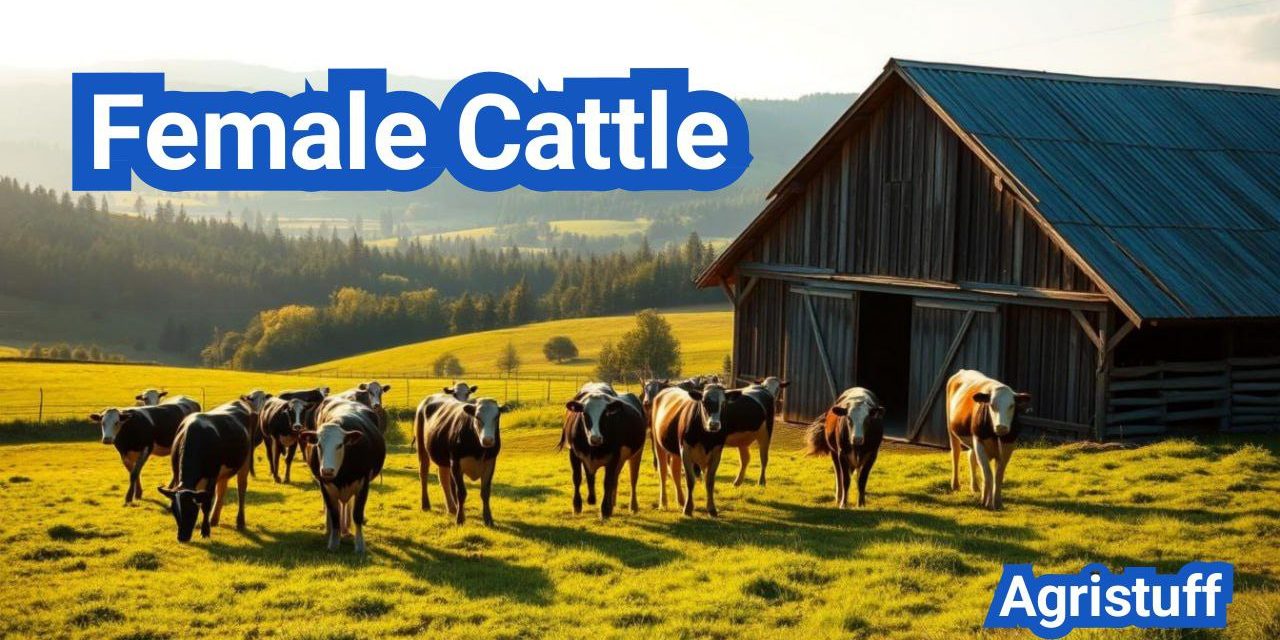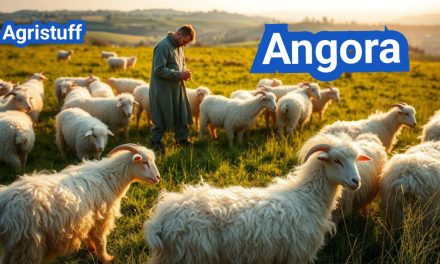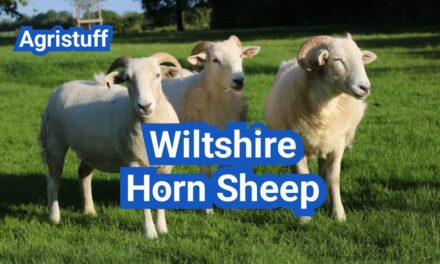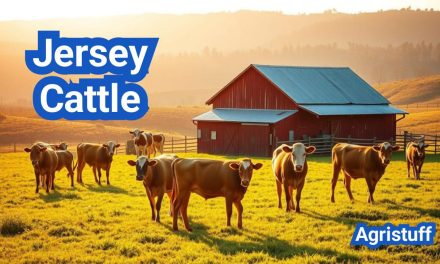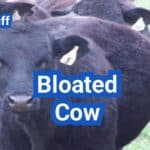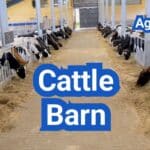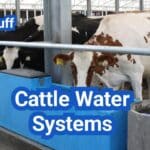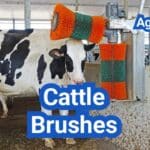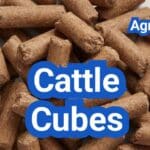Dairy farming relies heavily on female cattle for milk production, making them a crucial component of the agricultural industry.
The lactation cycle in cows is a complex process that requires careful management of feed requirements to match cow genetics, ensuring optimal milk production.
Understanding the importance of cattle breeding and livestock management is essential for farmers to improve the quality and quantity of milk produced.
Key Takeaways
- The role of female cattle in dairy farming is vital for milk production.
- Cattle breeding and livestock management are crucial for optimal milk production.
- The lactation cycle in cows requires careful feed management.
- Matching feed requirements with cow genetics is essential.
- Dairy farmers must understand the importance of cattle breeding.
Understanding Female Cattle Biology and Terminology
Understanding the lifecycle and biology of female cattle is essential for effective cattle management. Female cattle, commonly referred to as cows, are integral to agricultural practices worldwide, particularly in dairy and beef production.
Defining Female Cattle: Cows, Heifers, and Calves
Female cattle are categorized into different stages based on their age and reproductive status. A calf refers to a young female cattle in the initial stages of life, typically within the first year. As the calf matures, it becomes a heifer, which is a female that has not yet given birth to a calf. Once a heifer gives birth, it is referred to as a cow. Understanding these terms is crucial for managing cattle effectively.
“The terminology associated with female cattle is not just about semantics; it reflects their stage of development and reproductive status, which are critical factors in cattle management,” says an expert in cattle breeding.
The Female Bovine Lifecycle
The lifecycle of female cattle encompasses several stages, from birth through maturity. The lifecycle begins with the calf stage, followed by the heifer stage, and finally, the cow stage. Each stage has its unique nutritional and management requirements. For instance, heifers need to be bred at the appropriate age to ensure they calve at around 2 years of age, optimizing their reproductive lifespan.
- Calf stage: Birth to 1 year
- Heifer stage: 1 year to first calving
- Cow stage: After first calving
Differences Between Male and Female Cattle
Male cattle and female cattle have distinct biological and physiological differences, primarily related to their reproductive roles. Male cattle, or bulls, are primarily used for breeding purposes, whereas female cattle are used for milk production, breeding, and eventually, meat production. Understanding these differences is vital for managing cattle operations efficiently.
Historically, cattle were domesticated for their milk, meat, and hides. Initially, they produced a relatively small amount of milk compared to modern breeds. Through selective breeding, modern dairy cows can produce significantly more milk, highlighting the importance of understanding and managing female cattle biology.
The Female Cattle Reproductive System

Understanding the reproductive system of female cattle is essential for farmers and veterinarians to manage breeding programs effectively. The reproductive system is a complex and highly specialized system that plays a crucial role in the production of milk and meat.
Anatomy and Function
The female cattle reproductive system consists of the ovaries, oviducts, uterus, cervix, and vagina. The ovaries are responsible for producing eggs and hormones that regulate the reproductive cycle. The oviducts provide a conduit for the egg to travel from the ovary to the uterus. The uterus is where the fertilized egg implants and develops during pregnancy.
The reproductive tract is designed to support the development of a fetus and to facilitate parturition. The cervix acts as a barrier that must be traversed by sperm during breeding and dilates during labor to allow the calf to pass through. The vagina receives the penis during mating and serves as the birth canal during parturition.
The Estrous Cycle
The estrous cycle in female cattle is a recurring physiological process that prepares the reproductive system for potential pregnancy. The cycle is influenced by hormonal changes and typically lasts between 18 to 24 days, with estrus (heat) lasting approximately 12 to 24 hours. During estrus, the cow is receptive to breeding and will exhibit behaviors such as standing to be mounted by other cows.
Monitoring the estrous cycle is crucial for successful breeding programs. Farmers use various methods to detect estrus, including observing behavioral changes and using estrus detection aids.
Reproductive Maturity in Heifers
Reproductive maturity in heifers is achieved when they are physically capable of reproducing. This typically occurs between 12 to 15 months of age, depending on breed, nutrition, and management practices. Genetic selection for improved fertility remains a challenge, and farmers must balance the need for early breeding with the heifer’s physical and reproductive development.
Nutritional management plays a critical role in achieving optimal reproductive maturity. Heifers that are underweight or overconditioned may experience reproductive issues, highlighting the importance of balanced rations and proper growth monitoring.
How to Successfully Breed Female Cattle
Successfully breeding female cattle involves understanding their reproductive biology and applying appropriate breeding techniques. Breeding is a critical aspect of cattle production, whether for dairy or beef purposes.
Natural Breeding vs. Artificial Insemination
Farmers have two primary options for breeding female cattle: natural breeding and artificial insemination (AI). Natural breeding involves introducing a bull to the herd, allowing it to mate with the females. This method is straightforward but requires careful management of the bull’s health and fertility.
Artificial insemination, on the other hand, offers more control over the breeding process, allowing farmers to select superior genetics from high-quality bulls without the need to maintain a bull on the farm. AI requires specialized training and equipment but can significantly improve the genetic quality of the herd.
Selecting Quality Breeding Stock
The success of a breeding program depends heavily on the quality of the breeding stock. Selection should be based on production traits, health, and genetic diversity. In Canada, for instance, initial selection for production traits focused on milk yield and milk fat yield.
| Trait | Importance | Selection Criteria |
|---|---|---|
| Milk Yield | High | Genetic potential, lactation history |
| Fertility | High | Reproductive history, genetic markers |
| Health | High | History of diseases, genetic resistance |
Optimal Breeding Age and Conditions
The optimal breeding age for heifers varies by breed but generally falls between 12 to 15 months. Breeding too early can lead to complications, while breeding too late may delay the production cycle.
Conditions such as nutrition and health status also play a crucial role. Heifers should be in good body condition and free from diseases before breeding.
Step-by-Step Breeding Management Protocol
A successful breeding program involves several steps:
- Identify the breeding season and prepare the herd accordingly.
- Select the breeding method (natural or AI) based on the farm’s resources and goals.
- Monitor the reproductive cycle of the females to determine the optimal breeding time.
- Ensure the health and fertility of the breeding stock.
- Keep detailed records of breeding activities and outcomes.
By following these steps and considering the factors outlined above, farmers can improve the efficiency and effectiveness of their breeding programs.
Managing Pregnancy and Calving in Female Cattle

Effective management of pregnancy and calving is crucial for the health and productivity of female cattle. This period is critical in the lifecycle of a cow, influencing not only the well-being of the dam but also the viability and health of the newborn calf.
Pregnancy Confirmation Methods
Pregnancy confirmation is a vital step in managing female cattle. Several methods are employed to confirm pregnancy, including:
- Rectal palpation, a traditional method that involves manually feeling the reproductive organs through the rectal wall.
- Ultrasonography, which provides a more accurate and earlier detection of pregnancy.
- Blood tests that measure pregnancy-associated proteins.
These methods allow farmers to identify pregnant cows early, enabling timely adjustments in management practices.
Nutritional Requirements During Gestation
Nutrition plays a pivotal role during the gestation period. The dietary needs of pregnant cattle vary depending on the stage of pregnancy and the cow’s body condition. Generally, pregnant cows require a balanced diet rich in energy, proteins, and essential minerals.
Nutritional Requirements:
- Energy: Adequate energy is crucial for fetal development and maintaining the cow’s health.
- Protein: Essential for fetal growth and the overall health of the cow.
- Minerals: Such as calcium and phosphorus, are vital for bone development in the fetus.
Signs of Approaching Labor
Recognizing the signs of approaching labor is essential for managing calving effectively. Key indicators include:
- Restlessness and isolation from the herd.
- Visible udder development and relaxation of the pelvic ligaments.
- A discharge from the vulva, indicating the onset of labor.
How to Assist with Difficult Births
Despite proper management, some births may be difficult. Knowing how to assist is crucial. Steps to follow include:
- Assessing the situation to determine the need for intervention.
- Lubricating the birth canal to facilitate delivery.
- Gently assisting the delivery, taking care not to cause injury to the cow or calf.
In complex cases, veterinary assistance may be necessary.
Cows typically utilize their body reserves for about 12 weeks after calving, emphasizing the need for careful nutritional management during this period to ensure a smooth transition and maintain the cow’s health.
Maximizing Milk Production in Female Cattle
Optimizing milk production in dairy cows requires a comprehensive understanding of lactation physiology and effective milking strategies. Milk production is a complex process influenced by various factors including genetics, nutrition, and milking practices.
Lactation Physiology
Lactation in dairy cows is divided into four phases: early, mid, and late lactation, and the dry period. Understanding these phases is crucial for maximizing milk yield. During early lactation, milk production increases rapidly, while in mid-lactation, it reaches its peak and then gradually declines.
Lactation Cycle Phases:
| Phase | Description | Milk Production Characteristics |
|---|---|---|
| Early Lactation | Rapid increase in milk production | High milk yield, increased energy demand |
| Mid Lactation | Peak milk production | Maximum milk yield, balanced energy and nutrient supply |
| Late Lactation | Gradual decline in milk production | Decreasing milk yield, preparation for dry period |
| Dry Period | Cessation of milking | Rest and rejuvenation for the next lactation cycle |
Proven Techniques to Increase Milk Yield
Several techniques can be employed to boost milk production in dairy cows. These include:
- Providing a balanced diet rich in nutrients
- Ensuring access to clean water and comfortable living conditions
- Implementing efficient milking practices and schedules
- Monitoring and managing cow health effectively
Modern Milking Technology and Methods
Advancements in milking technology have significantly impacted dairy farming. Modern milking systems are designed to improve efficiency, reduce labor, and enhance milk quality. Some of the key features of modern milking technology include automated milking systems, milk yield monitoring, and teat cleaning and disinfection.
Managing the Dry Period for Optimal Production
The dry period is a critical phase in the lactation cycle, during which the cow’s udder is allowed to rest before the next lactation. Proper management of the dry period is essential for maintaining optimal milk production in the subsequent lactation cycle. This involves careful monitoring of cow health, nutrition, and comfort during this period.
By understanding lactation physiology, employing proven techniques to increase milk yield, leveraging modern milking technology, and effectively managing the dry period, dairy farmers can maximize milk production in their female cattle.
Popular Dairy Breeds of Female Cattle
The dairy industry relies heavily on several popular breeds of female cattle, each with unique characteristics and milk production capabilities. These breeds have been developed over centuries to optimize milk yield and quality, catering to various dairy farming needs.
Holstein Cows: Characteristics and Management
Holstein-Friesian cows are renowned for their large milk production, making them a staple in many dairy farms. Originating from the Netherlands, Holsteins are characterized by their black and white markings, although red and white variants also exist. Their high milk yield is attributed to their genetic makeup and effective management practices, including nutrition and milking routines.
Effective management of Holstein cows involves a balanced diet rich in nutrients, regular veterinary check-ups, and comfortable living conditions to reduce stress and enhance milk production.
Jersey Cows: Optimal Care Practices
Jersey cows are another prominent dairy breed, known for their rich milk with high butterfat content. Originating from the Channel Island of Jersey, these cows are smaller in size compared to Holsteins but are prized for their milk’s quality. Jersey cows are generally hardy and adaptable, requiring less food and care compared to larger breeds.
Optimal care for Jersey cows includes providing high-quality pasture, appropriate shelter, and regular health monitoring. Their smaller size and robust nature make them suitable for a variety of dairy farming systems.
Comparing Milk Production Across Dairy Breeds
When comparing milk production across different dairy breeds, factors such as milk yield, butterfat content, and protein levels are considered. Holstein cows lead in terms of milk volume, while Jersey cows excel in milk quality with higher butterfat and protein content.
| Breed | Milk Yield (liters/day) | Butterfat Content (%) |
|---|---|---|
| Holstein | 25-30 | 3.5-4.0 |
| Jersey | 15-20 | 5.0-6.0 |
Understanding these differences is crucial for dairy farmers to choose the breed that best suits their production goals and management capabilities.
Beef Cattle Females: Breeds and Management

Understanding the different breeds and management practices for female beef cattle is vital for farmers and ranchers. The success of beef cattle operations largely depends on the effective management of female cattle, including their breeding, nutrition, and overall health.
Selection and Breeding Programs for Angus Females
Angus females are renowned for their high-quality beef production. When selecting Angus females for breeding programs, factors such as genetic lineage, growth rate, and reproductive history are crucial. Effective breeding programs focus on improving these traits to enhance overall herd quality.
The selection process involves evaluating the females’ conformation, fertility, and milk production potential. By choosing females with superior genetics, farmers can improve the overall productivity of their herd.
Development and Care of Red Angus Bred Heifers
Red Angus bred heifers are another popular choice for beef cattle operations. These heifers are known for their hardiness and fertility. Proper care and management are essential to ensure they reach their full potential.
Nutritional management plays a critical role in the development of Red Angus heifers. Providing a balanced diet that meets their nutritional needs is vital for optimal growth and reproductive health.
Adaptation and Productivity of Brahman Females
Brahman females are highly regarded for their heat tolerance and resistance to diseases, making them an excellent choice for operations in challenging environments. Their adaptability and productivity are key advantages in beef cattle production.
Brahman females are often used in crossbreeding programs to improve the hardiness and fertility of the herd. Their ability to thrive in various conditions makes them a valuable asset to beef cattle operations.
Distinctive Female Cattle Varieties

Certain female cattle breeds stand out for their hardiness, productivity, or adaptability. These distinctive varieties can offer unique advantages for farmers and ranchers, depending on their specific needs and operational goals.
Highland Cattle Females: Care and Management
Highland cattle are known for their hardiness and adaptability, making them an excellent choice for challenging environments. Female Highland cattle, in particular, are valued for their maternal instincts and ability to thrive in rugged conditions. To care for Highland cattle females, farmers should focus on providing adequate nutrition, especially during harsh weather conditions, and ensuring they have access to suitable shelter.
Nutritional Needs: Highland cattle are known to be efficient foragers, but they still require a balanced diet, particularly during winter months when pasture quality may be poor. Supplementing with hay or other forages can be essential.
Female Longhorn Cattle: Handling and Breeding
Female Longhorn cattle are renowned for their hardiness and resistance to disease. They are also known for their maternal abilities and longevity. Handling Longhorn females requires a gentle approach, as they can be sensitive to stress.
Breeding Considerations: When breeding Longhorn cattle, selecting females with desirable traits such as high fertility and good maternal characteristics is crucial. Longhorns are known for their ease of calving, which makes them an attractive choice for many ranchers.
Dual-Purpose Female Cattle for Small Farms
Dual-purpose cattle breeds offer the advantage of providing both milk and meat, making them an attractive option for small farms. These breeds are particularly valuable for farmers who want to diversify their products without maintaining separate herds for dairy and beef.
Management Tips: Managing dual-purpose cattle requires balancing the needs for milk production and beef quality. Farmers should focus on breeds that are known for their dual-purpose capabilities and implement management practices that support both aspects, such as appropriate feeding strategies and regular veterinary care.
Essential Nutrition for Female Cattle

The nutritional needs of female cattle vary across different stages of their lifecycle, impacting their health and productivity. A well-balanced diet is crucial for maintaining their overall well-being, supporting reproductive health, and optimizing milk production.
Creating Balanced Rations for Different Life Stages
Female cattle have different nutritional requirements at various stages of their life, including growth, pregnancy, and lactation. Balanced rations must be formulated to meet these specific needs, ensuring adequate intake of energy, proteins, vitamins, and minerals.
- For growing heifers, the focus is on supporting development and achieving optimal breeding weight.
- Pregnant cows require nutrients that support fetal development and prepare them for lactation.
- Lactating cows need a diet rich in energy and nutrients to support milk production and maintain their health.
Special Nutritional Needs for Pregnant and Lactating Cows
Pregnant and lactating cows have unique nutritional requirements. During pregnancy, especially in the later stages, cows need increased nutrients to support the developing fetus. Lactating cows require a significant amount of energy for milk production.
Energy is a critical component of their diet, as it directly impacts milk yield and the cow’s overall health. Nutritional deficiencies during these periods can lead to reduced productivity and health issues.
Pasture Management for Optimal Nutrition
Pasture management plays a vital role in providing female cattle with optimal nutrition. Rotational grazing is a recommended practice that helps maintain pasture quality and quantity, ensuring that cattle receive a diverse and nutrient-rich diet.
- Monitor pasture quality and adjust grazing schedules accordingly.
- Implement rotational grazing to prevent overgrazing and maintain soil health.
- Supplement with necessary nutrients if pasture quality is insufficient.
Preventing Common Nutritional Disorders
Nutritional disorders in female cattle can arise from deficiencies or excesses of specific nutrients. Common issues include hypocalcemia (milk fever), ketosis, and laminitis.
Preventing these disorders involves providing a balanced diet tailored to the cow’s life stage and production level, as well as ensuring access to clean water and appropriate mineral supplements.
- Monitor cow health and adjust diets as necessary.
- Provide adequate minerals and vitamins.
- Ensure access to fresh, clean water at all times.
Complete Health Management Guide for Female Cattle

A comprehensive approach to health management is essential for ensuring the longevity and productivity of female cattle. Effective health management encompasses a range of practices, from preventative healthcare protocols to the treatment of common health issues, all of which are critical to maintaining a healthy and productive herd.
Establishing Preventative Healthcare Protocols
Preventative healthcare is the cornerstone of a successful cattle health management program. This includes regular veterinary check-ups, monitoring for signs of illness, and implementing measures to prevent disease. Vaccination programs and parasite control measures are key components of preventative care, helping to protect against diseases and parasites that can significantly impact cattle health and productivity.
“A proactive approach to health management can significantly reduce the incidence of disease and improve overall herd health,” according to veterinary experts. Establishing a preventative healthcare protocol requires a thorough understanding of the specific health risks faced by your cattle, as well as the development of strategies to mitigate these risks.
Treating Common Health Issues in Cows
Despite the best preventative measures, health issues can still arise. Common health issues in female cattle include mastitis, reproductive tract infections, and metabolic disorders. Prompt and effective treatment is crucial to minimize the impact of these conditions on cattle health and productivity.
- Mastitis: Early detection and treatment with appropriate antibiotics are essential.
- Reproductive tract infections: Regular reproductive health checks can help identify issues early.
- Metabolic disorders: Nutritional management plays a key role in preventing these conditions.
Reproductive Health Maintenance
Reproductive health is a critical aspect of female cattle health, directly influencing fertility and productivity. Regular reproductive health checks, proper nutrition, and appropriate breeding practices are all essential for maintaining reproductive health.
Genetic selection for improved fertility remains a challenge, but advancements in breeding technology and reproductive health management are helping to address this issue. Ensuring that female cattle receive appropriate nutritional support during gestation and lactation is also vital for reproductive health.
Vaccination and Parasite Control Schedules
Developing and adhering to vaccination and parasite control schedules is a critical component of cattle health management. These schedules should be tailored to the specific needs of your herd, taking into account factors such as disease prevalence in your area and the age and health status of your cattle.
Regular monitoring and adjustment of these schedules as necessary are key to their effectiveness. Working closely with a veterinarian to develop and implement these programs can help ensure that they are effective and up-to-date.
How to Raise Quality Replacement Heifers

Replacement heifers represent the next generation of breeding stock, making their care and management paramount. A well-managed replacement heifer program is crucial for the sustainability and productivity of both dairy and beef operations.
Selection Criteria for Future Breeding Stock
Selecting the right heifers for breeding is a critical decision that impacts the overall quality of the herd. Key selection criteria include genetic merit, growth rate, and overall health. Farmers should prioritize heifers that exhibit desirable traits such as high fertility, good conformation, and the potential for high milk production or beef quality, depending on the operation’s focus.
Growth and Development Benchmarks
Monitoring the growth and development of replacement heifers is essential to ensure they reach breeding age at the optimal weight and condition. Regular weighing and body condition scoring help in assessing whether heifers are on track to meet breeding targets. Adjustments to nutrition and management practices may be necessary to achieve desired growth rates.
Special Considerations for Freemartin Heifers
Freemartin heifers, which are sterile females born twin to a male, present unique challenges. While they may not be suitable for breeding, they can still be raised for other purposes. Understanding the implications of freemartinism is crucial for making informed decisions about these animals.
Preparing Heifers for First Breeding
Preparing heifers for their first breeding involves a combination of nutritional management, health checks, and reproductive evaluation. Ensuring that heifers are at the right weight and have achieved reproductive maturity is vital for successful breeding. Proper synchronization and breeding protocols can significantly improve conception rates.
Sustainable Management Practices for Female Cattle

Implementing sustainable practices in female cattle management can significantly enhance both productivity and environmental stewardship. As the global demand for dairy and beef products continues to rise, farmers are under increasing pressure to adopt methods that are not only economically viable but also environmentally friendly.
Implementing Rotational Grazing Systems
Rotational grazing is a key strategy in sustainable cattle management. By rotating pastures, farmers can improve soil health, increase biodiversity, and reduce the environmental impact of their operations. This practice allows for more efficient use of land, reducing the need for additional feed and minimizing waste.
“Rotational grazing is not just beneficial for the environment; it also improves the quality of life for our cattle,” says Jane Smith, a renowned cattle farmer. “By giving our animals access to fresh pasture regularly, we see improvements in their overall health and productivity.”
Reducing Environmental Impact
Female cattle operations can have a significant environmental impact, from greenhouse gas emissions to water usage. However, by adopting sustainable practices, farmers can reduce their ecological footprint. This includes implementing manure management systems, reducing the use of chemical fertilizers, and promoting biodiversity on their farms.
- Implementing conservation tillage to reduce soil erosion
- Using cover crops to enhance soil health
- Integrating trees into grazing systems (silvopasture)
Organic and Regenerative Approaches
Organic and regenerative farming practices are gaining popularity among female cattle farmers. These approaches focus on working with natural processes to enhance the overall health of the farm ecosystem. Organic farming avoids the use of synthetic fertilizers and pesticides, while regenerative farming aims to regenerate the soil, improve biodiversity, and enhance ecosystem services.
By adopting these sustainable management practices, female cattle farmers can not only contribute to a more environmentally friendly agricultural sector but also improve the long-term viability of their operations. As the agricultural industry continues to evolve, the importance of sustainability in female cattle management will only continue to grow.
Economic Aspects of Female Cattle Production

Understanding the economic aspects of female cattle production is crucial for farmers to make informed decisions about their operations. The economic viability of these operations depends on a variety of factors, including the value of breeding stock, the cost-benefit analysis of dairy versus beef operations, and the prevailing market trends.
Valuing Breeding Stock and Replacement Heifers
The value of breeding stock and replacement heifers is a critical component of female cattle production economics. Breeding stock valuation involves assessing the genetic quality, health, and productivity of the animals. Factors such as milk production potential, fertility rates, and growth rates are essential in determining the value of breeding stock.
Replacement heifers, which are young females that have not yet calved, represent a significant investment for dairy and beef operations. The cost of raising these heifers to breeding age can be substantial, and their value is closely tied to their potential future productivity.
Cost-Benefit Analysis of Dairy vs. Beef Operations
Dairy and beef operations have different economic characteristics. Dairy operations focus on milk production, with revenue primarily generated from the sale of milk and dairy products. Beef operations, on the other hand, focus on the production of cattle for meat, with revenue generated from the sale of finished cattle.
A cost-benefit analysis of these operations involves comparing the costs of production (such as feed, labor, and veterinary care) with the revenue generated from sales. Market trends and consumer demand play a significant role in determining the profitability of both dairy and beef operations.
Market Trends and Economic Outlook
The economic outlook for female cattle production is influenced by market trends and consumer demand. Factors such as changes in consumer preferences, global market conditions, and government policies can impact the profitability of cattle operations.
Staying informed about market trends and adjusting production strategies accordingly can help farmers maximize their returns. This might involve diversifying products, adopting new technologies, or exploring alternative marketing channels.
Maximizing Profitability in Female Cattle Operations
Maximizing profitability in female cattle operations requires a comprehensive approach that considers breeding, nutrition, health, and marketing. Efficient production practices, such as optimizing feed conversion rates and minimizing veterinary costs, can help reduce expenses.
Additionally, farmers can explore value-added products and direct marketing strategies to increase revenue. By understanding the economic aspects of their operations and making data-driven decisions, farmers can improve their bottom line and ensure the long-term sustainability of their businesses.
Fascinating Facts About Female Cattle
There’s more to female cattle than meets the eye, with intriguing facts about their intelligence, behavior, and achievements. Female cattle, including cows and heifers, play a crucial role in agriculture, not just for their milk and meat production but also for their complex social structures and historical significance.
Social Behavior and Herd Dynamics
Female cattle are known for their complex social behaviors and herd dynamics. They form close bonds within their groups, often establishing a hierarchical structure. This social complexity is a fascinating area of study, revealing that cattle are capable of recognizing individual members of their herd and even forming friendships.
The dominance hierarchy within a herd is typically led by older, more experienced cows. This social order helps maintain stability within the group, reducing conflicts and stress among the animals. Understanding these dynamics is crucial for farmers and ranchers, as it can impact the overall health and productivity of their cattle.
Intelligence and Emotional Capacity
Contrary to common perceptions, cattle are highly intelligent animals with a significant emotional capacity. They have been observed exhibiting problem-solving skills and have been known to adapt to new situations. Female cattle, in particular, have been observed showing empathy towards each other, further highlighting their emotional complexity.
Key indicators of cattle intelligence include:
- Problem-solving abilities
- Adaptability to new environments
- Complex communication systems involving vocalizations and body language
- Emotional responses such as empathy and stress
Historical Significance in Agriculture
Female cattle have been integral to agriculture for thousands of years, providing milk, meat, and labor. Their domestication marked a significant shift in human history, enabling the development of settled agriculture and the rise of complex societies.
| Period | Significance of Female Cattle |
|---|---|
| Prehistoric Era | Initial domestication for milk and meat |
| Ancient Civilizations | Used for labor, milk, and meat; played a crucial role in the economy |
| Modern Era | Selective breeding for improved milk and meat production; advanced dairy and beef industries |
Record-Breaking Female Cattle Throughout History
Throughout history, there have been numerous record-breaking female cattle, celebrated for their exceptional milk production, size, or other remarkable traits. For instance, the Holstein cow, known for its high milk yield, has produced over 100,000 pounds of milk in a single year.
Notable examples include:
- A Holstein cow named Big Bertha, who lived to be 48 years old, setting a record for the oldest cow.
- A Jersey cow that produced over 100,000 pounds of milk in a year, highlighting the breed’s exceptional dairy capabilities.
The Future of Female Cattle in Modern Agriculture
The future of cattle farming is poised to be shaped by technological advancements and evolving consumer demands. As the agricultural landscape continues to transform, female cattle will remain a crucial component of modern agriculture.
Advances in breeding techniques, nutrition, and health management will be critical in enhancing the productivity and sustainability of female cattle. The integration of technology, such as precision agriculture and data analytics, will also play a significant role in optimizing cattle operations.
As consumer preferences continue to drive demand for sustainable and humane farming practices, the cattle industry will need to adapt to meet these expectations. By prioritizing animal welfare, environmental stewardship, and social responsibility, farmers can ensure a viable future for female cattle in modern agriculture.
The role of female cattle in shaping the future of cattle farming is undeniable. As the industry continues to evolve, it is essential to prioritize their health, productivity, and well-being to meet the demands of a changing world.
FAQ
What is the difference between a cow and a heifer?
A cow is a mature female cattle that has given birth to at least one calf, while a heifer is a young female cattle that has not yet had a calf.
How long is the gestation period for female cattle?
The gestation period for female cattle is approximately 280-290 days, or almost 9.5 months.
What are the most common dairy breeds of female cattle?
The most common dairy breeds of female cattle are Holstein and Jersey cows, known for their high milk production.
What is the estrous cycle in female cattle?
The estrous cycle in female cattle is the reproductive cycle that occurs every 18-24 days, during which the female is receptive to breeding.
How can I maximize milk production in my dairy cows?
To maximize milk production, dairy cows require proper nutrition, comfortable living conditions, and regular milking schedules, as well as effective milking technology and management of the dry period.
What are the nutritional needs of pregnant and lactating cows?
Pregnant and lactating cows require a balanced diet that includes adequate energy, protein, and essential nutrients to support fetal growth and milk production.
How often should I vaccinate my female cattle?
Vaccination schedules for female cattle vary depending on factors such as age, health status, and disease prevalence, but typically involve regular vaccinations against common diseases.
What is rotational grazing, and how can it benefit my cattle operation?
Rotational grazing involves moving cattle to different grazing areas to promote pasture health and reduce environmental impact, which can improve cattle nutrition and overall operation sustainability.
How can I identify and manage common health issues in my female cattle?
Regular monitoring and veterinary care can help identify and manage common health issues in female cattle, such as reproductive problems, mastitis, and nutritional disorders.
What are the benefits of raising replacement heifers?
Raising replacement heifers can help ensure a consistent supply of high-quality breeding stock, improve herd genetics, and support the long-term sustainability of the cattle operation.
How can I reduce the environmental impact of my cattle operation?
Implementing sustainable management practices such as rotational grazing, manure management, and reducing waste can help minimize the environmental impact of cattle operations.
What are the economic benefits of dairy vs. beef operations?
Dairy operations can provide a steady income stream through milk sales, while beef operations can offer higher returns through the sale of cattle, with the choice between the two depending on factors such as market demand and operation resources.
How can I prepare my heifers for their first breeding?
Preparing heifers for their first breeding involves ensuring they are at the optimal age and weight, have received proper nutrition and healthcare, and have been selected based on desirable breeding traits.
Conclusion of: Female Cattle
Female cattle are fundamental to agricultural practices, significantly contributing to breeding programs, milk production, and the overall sustainability of livestock farming. Understanding female cattle, their role in breeding and dairy production, and various fascinating facts about them is crucial for effective livestock management. This comprehensive guide provides insights into female cattle, highlighting their essential roles and characteristics.
What are Female Cattle?
Female cattle, including cows and heifers, play critical roles within agriculture, particularly in breeding and milk production. Cows refer to mature female cattle that have produced offspring, while heifers are younger females that have not yet calved. Female cattle are central to livestock farming operations due to their reproductive capabilities and milk-producing potential. Female Cattle Overview
Breeding Roles of Female Cattle
Female cattle are vital in breeding programs, ensuring herd expansion and genetic improvement:
- Natural Breeding: Involves mating cows with selected bulls to maintain desirable herd traits.
- Artificial Insemination (AI): A controlled breeding technique that improves genetic diversity and productivity.
- Embryo Transfer (ET): Allows multiplication of offspring from genetically superior cows. Breeding Practices
Milk Production in Female Cattle
Milk production is a significant role of female cattle, primarily in dairy farming. Key considerations for effective milk production include:
- Breed Selection: Breeds like Holstein and Jersey are popular for high milk yield and quality.
- Nutrition Management: Balanced diets to maximize milk output and maintain cattle health.
- Milking Systems: Modern milking technologies for efficient milk extraction and quality control. Dairy Farming Overview
Breeds of Female Cattle
Various cattle breeds are selected based on specific roles such as milk production or breeding capabilities:
- Holstein: Renowned for highest milk production.
- Jersey: Valued for high butterfat milk ideal for cheese production.
- Hereford: Robust breed suitable for breeding and beef production.
- Angus: Popular for breeding due to excellent genetic traits. Cattle Breeds Information
Nutritional Needs of Female Cattle
Proper nutrition is essential for optimal health, milk production, and reproductive performance:
- Balanced Diet: Incorporating forage, grains, minerals, and vitamins.
- Supplementation: Additional nutrients during pregnancy and lactation to support increased metabolic demands.
- Feed Management: Effective feeding strategies that enhance milk yield and cattle health. Cattle Nutrition Guidelines
Health Management for Female Cattle
Maintaining female cattle health ensures productivity and longevity:
- Routine Check-ups: Regular veterinary assessments to prevent and manage diseases.
- Vaccinations and Parasite Control: Protecting cattle from common diseases and infestations.
- Stress Reduction: Minimizing stress through humane handling and management practices. Cattle Health Management
Housing and Facilities for Female Cattle
Proper housing significantly influences milk production, breeding efficiency, and overall welfare:
- Comfortable Housing: Structures that offer adequate space, ventilation, and comfort.
- Efficient Facilities: Milking parlors and handling equipment to streamline farming operations.
- Waste Management Systems: Environmentally responsible manure handling practices. Dairy Cattle Housing
Economic Impact of Female Cattle
Female cattle have considerable economic implications for farming operations:
- Revenue Generation: Through milk sales, offspring production, and by-product utilization.
- Cost Management: Efficient feeding, healthcare, and facility maintenance practices to enhance profitability.
- Market Understanding: Awareness of market trends influencing dairy and beef prices. Cattle Farming Economics
Environmental Sustainability
Sustainable practices in female cattle management reduce environmental impacts:
- Rotational Grazing: Promoting soil health and pasture longevity.
- Efficient Resource Use: Practices minimizing water and feed waste.
- Emissions Management: Adopting strategies to reduce methane emissions. Sustainable Dairy Practices
Fascinating Facts About Female Cattle
Female cattle have unique and interesting characteristics:
- Social Structure: They form complex social bonds and hierarchies within herds.
- Longevity and Productivity: With proper management, cows can produce milk for many years.
- Cognitive Abilities: Known for their ability to learn and remember routines. Cattle Facts
Final Thought
Female cattle are indispensable in agriculture, contributing significantly to dairy and beef production, herd sustainability, and economic viability. Effective management, including optimal nutrition, healthcare, and sustainable practices, ensures productive and profitable female cattle farming.

